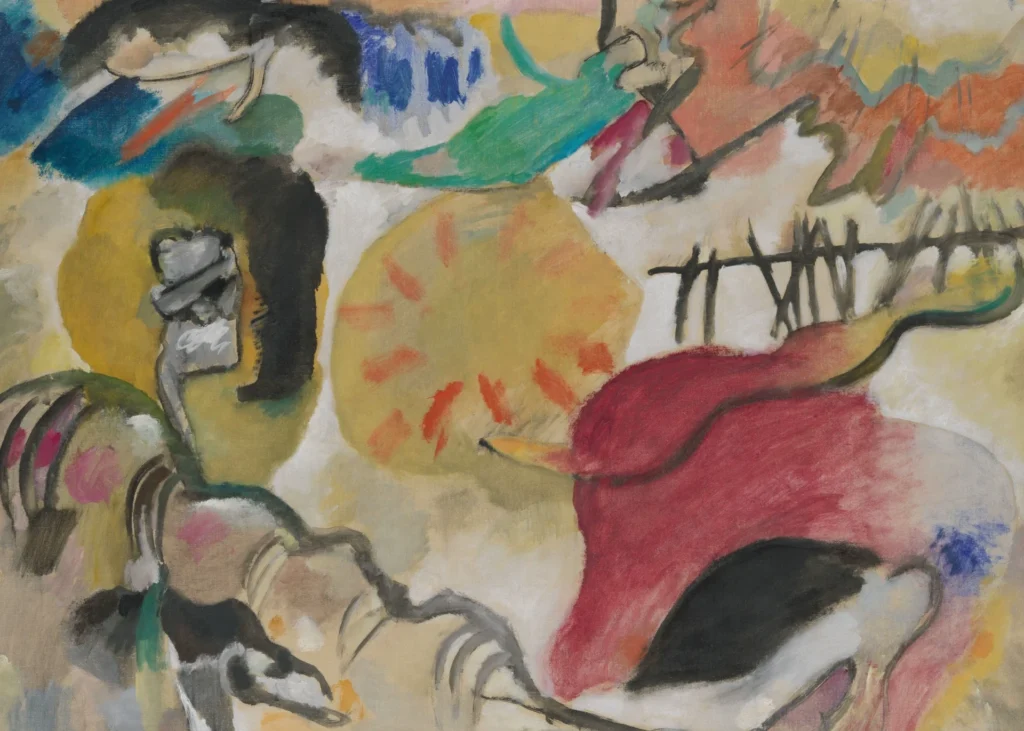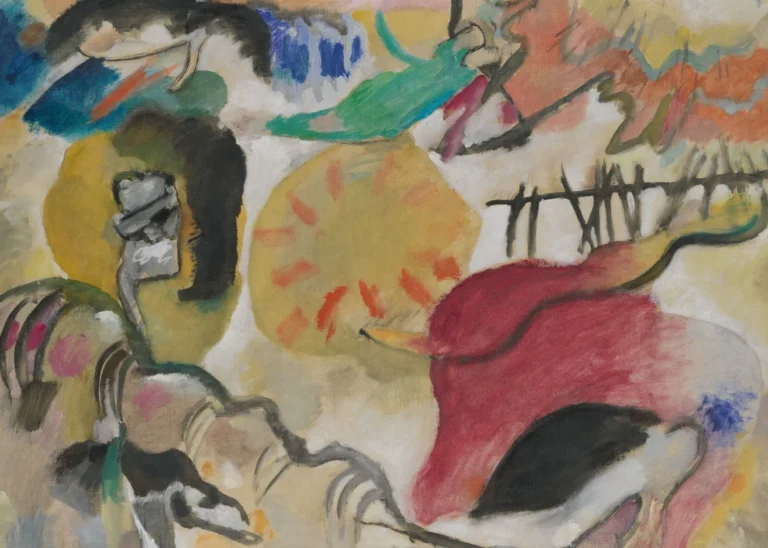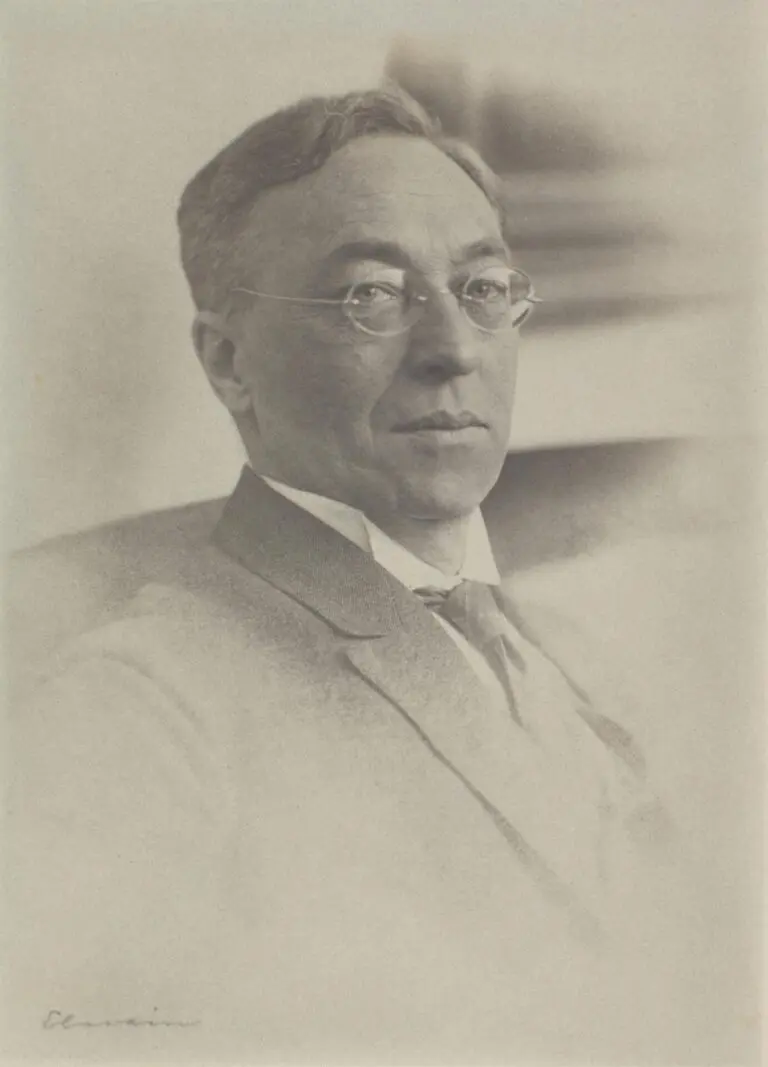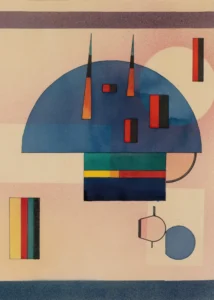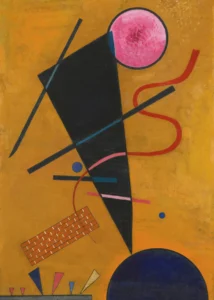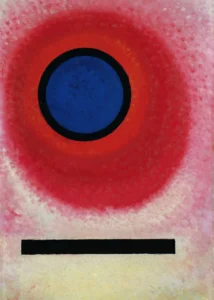Improvisation 27 (1912)
Wassily Kandinsky's Improvisation 27 (Garden of Love II) reflects an ambitious fusion of color, form, and emotional resonance captured in abstract images. Emphasizing themes of love and paradise, it features couples in an Eden-like setting, surrounded by serpentine shapes and a commanding sun. The painting signals Kandinsky's break from traditional representation, highlighting his belief in art's spiritual power. Purchased by the notable Alfred Stieglitz, this work encountered initial criticism but is recognized today as a significant step in modern art.
Year 1912
About the Artwork
In 1912, Wassily Kandinsky embarked on creating Improvisation 27 (Garden of Love II), a painting that exudes his belief in the emotional and spiritual significance of art. Inspired by his theoretical writings, particularly Concerning the Spiritual in Art, Kandinsky sought to evoke feelings rather than depict tangible realities. The work features three couples amidst abstract forms, suggesting a thematic relationship to the Garden of Eden. Upon its exhibition at the Armory Show in New York in 1913, many were perplexed by its abstract forms, yet it quickly became a celebrated piece of modernist art, embodying Kandinsky's pioneering spirit.
Did You Know
This significant work was purchased by Alfred Stieglitz, who played a crucial role in the promotion of modern art in America and recognized the painting’s pioneering spirit despite the widespread confusion it created.
During its first exhibition at the Armory Show, the painting faced criticism from figures like President Teddy Roosevelt, who claimed it represented the ‘lunatic fringe’ of contemporary art signaling the tensions between traditional and modern artistic values.
Wassily Kandinsky was a co-founder of the Blue Rider group, an influential collective of artists that aimed to explore emotional expression through color and form, significantly shaping the trajectory of abstract art and modernism.




